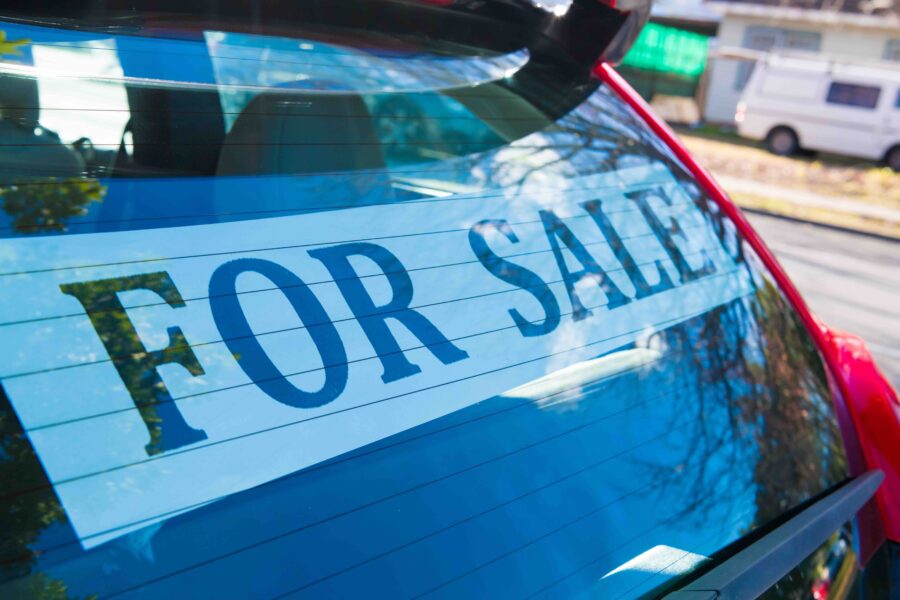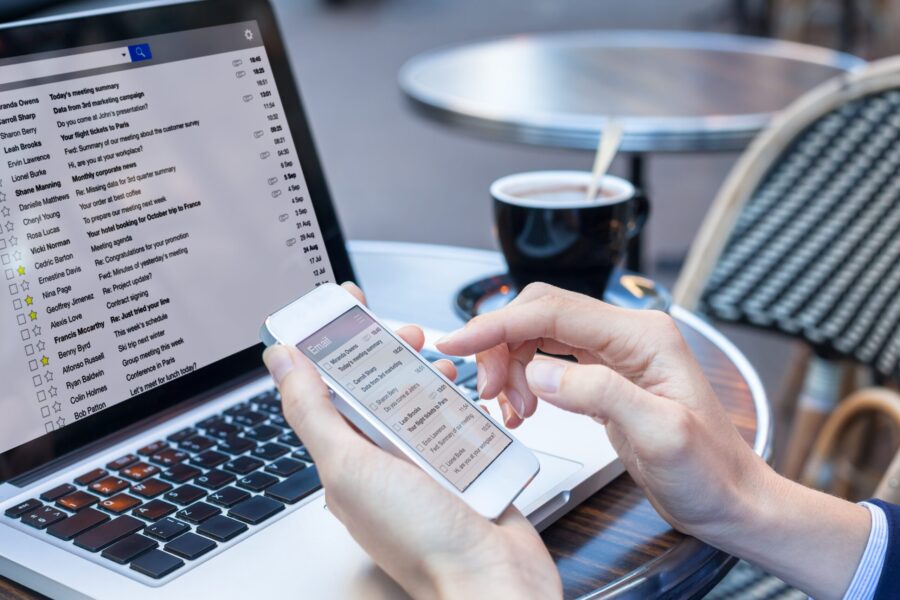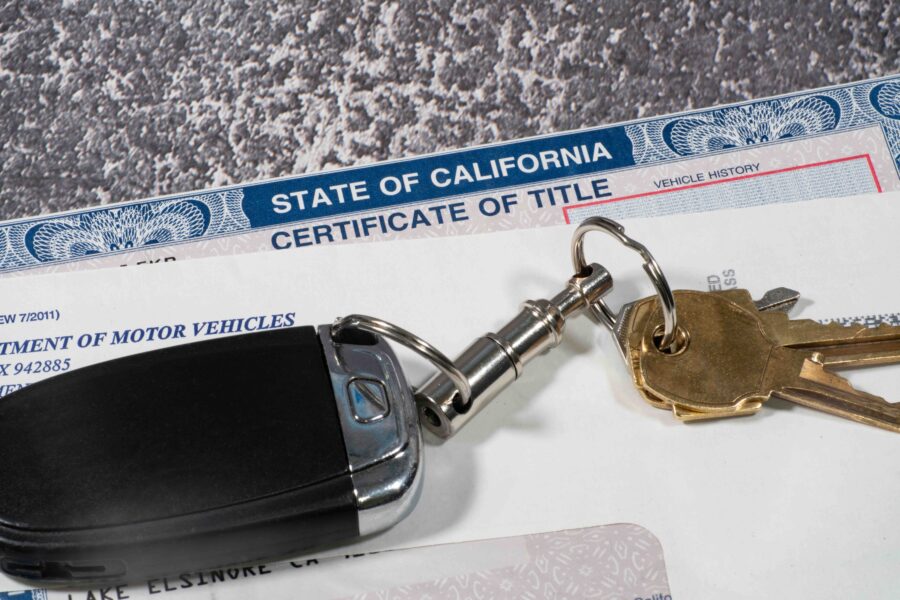How to Buy a Car from a Private Seller

Contents
Buying a car doesn’t rank very high on the list of things people like to do. In fact, a survey by Edmunds found that half of Americans would prefer to clean the toilet rather than face the stresses of car buying. That’s largely due to the typical dealership sales experience, which seems geared to wear you down with pushy salespeople, endless haggling, and unexpected add-on fees.
If you’re like others who dread a trip to the dealership, we have good news. There’s another way to buy a car that avoids the headaches. Even better, it offers access to some of the best used cars on the market. And it saves you money.
So just what is this great car buying secret? It’s simple. Buy your next car from a private seller.

Pros of Buying from a Private Seller
- Fewer sales tactics
- Saves 10-20% over a dealership purchase
- Best place to find exceptional examples
Before you head down the path of buying a used car from a private seller, let’s review some of the benefits of this approach.
First off, private sellers aren’t professional salespeople. That means they’re more likely to be straightforward with you about the car they’re selling, and they aren’t as likely to play the typical sales games, such as going back and forth to their “manager” to see if they can accept your offer. Private sellers usually want to wrap up a sale as quickly as possible and move on with their lives, not to string you along, hoping to eke out additional profit.
Another benefit to private party sales is price. Private sellers don’t have the overhead costs of running a business, so they typically sell their cars for 10-20% less than a dealership would sell the exact same car. That’s a savings of several thousand dollars in most cases. You can see this for yourself if you check the value of a car on one of the major vehicle pricing sites, such as Kelley Blue Book. They have separate values for “private party” and “dealer retail” purchases. Guess which one is higher.
One of the best reasons to buy a car from a private seller is also one of the most overlooked. The nicest used cars on the market are almost always offered by private sellers. That’s because someone who has carefully looked after a car year after year isn’t likely to trade it in when it’s time to buy a new one. Trade-in prices are the lowest out there, so if a car’s really well-kept, the owner will likely try to sell it themselves to get the most money for it. The used cars on a dealership lot, on the other hand, will all have come from trade-ins or lease returns. That doesn’t necessarily mean they are bad cars. But it does mean that their prior owners probably didn’t think they were anything special.
Finally, a private seller is far more likely to know and share the car’s full history, including its service records. And should you have any questions about the car and how it was used, there’s no person better to ask than its owner. Knowing the history of the car — whether it was ever in an accident, how it was used, where it was taken for service, etc. — is a critical part of evaluating any used car for purchase. A dealership, by contrast, usually tosses out any paperwork or other history associated with a vehicle before they put it on their lot.

Cons of Buying from a Private Seller
- Limited selection
- More complex financing
- No trade-ins
Buying a car from a private seller isn’t for everyone, though. In some cases, buying from a dealership may be the better choice.
If you’re shopping for a brand-new car, only a dealership can handle that. The same is largely true for used cars that are “near new.” Almost all of the inventory for two-to-three-year-old used cars is found at dealerships. That’s because most of these cars are coming back to the dealer as lease returns, which the dealership then lists for sale. Private sellers, on the other hand, tend to sell cars that are five years old or older.
Selection is also a significant dealership advantage. A private seller usually has just one car to sell, whereas the typical used car dealer stocks dozens. That means if you’re not quite sure what make or model you want to buy, you could visit a few dealers and quickly compare a variety of options back to back. To do the same with private sellers would take quite a bit longer since you have to arrange each visit individually. That said, you can still use dealerships to test drive many different cars and then, once you’ve decided which model you want, seek out a private seller for the actual purchase. Just make sure not to tip off the dealership sales staff about your plan.
If you’re going to take out a loan to pay for the vehicle, it is possible to finance a private party purchase. But it’s not quite as easy as walking into a dealership on the day of the purchase. Instead, you’ll need to apply in advance. The best way is to visit your local bank or credit union. Once you’ve been approved and found the car you want, the bank will facilitate payment to the private seller as you complete the purchase. Note that some banks have limits on the age or mileage of vehicles they’re willing to finance — typically around ten years and 100,000 miles. However, there are specialty lenders who work with older vehicles. You can read more about them in our article, How to Finance an Older Used Car.
Lastly, private sellers generally don’t take cars in trade. But that’s okay. Instead of trading in your old ride, you can always sell it yourself. That’ll get you the most money. Or you can offer it to one of the many dealerships that buy used cars without tying them to a new car purchase. They include physical retailer Carmax and online sites like Vroom and Carvana. Check out our article The Best Way to Sell Your Car for more on the subject.

Where to Find Private Party Listings
- Craigslist typically has the widest selection
- Also try Facebook Marketplace and Offer Up
- Set up alerts to get the jump on new listings
Our favorite place to find used cars for sale by owners is Craigslist. There’s no other source with as many private-party listings. You may have heard horror stories about buying cars off Craigslist. Some of them are no doubt true. But horror stories can happen on any platform where used cars are offered for sale. The key is to tread carefully no matter where you shop.
We like Craigslist because they make it easy to filter listings by the criteria that matter most. That includes the ability to filter out all dealership and duplicate listings and listings without photos or prices. You can also tailor your searches by numerous other factors, including vehicle mileage, make and model, model year, title status (e.g. no salvage vehicles), condition, and of course asking price. That way, you can quickly cut through much of the clutter and focus only on the examples you want. Craigslist also charges a small fee for posting a car for sale, which tends to weed out some of the garbage.
In addition, Craigslist makes it easy to set up alerts that notify you when a vehicle matching your search criteria pops up. This is handy because the best cars listed for sale tend to sell quickly. If you can be one of the first to respond, you’ll have a much better chance to grab a great used car before it’s gone.
If you can’t find what you want via Craigslist, check out Facebook Marketplace and Offer Up for their for-sale-by-owner posts. Their listings tend not to have as many details or search options as Craigslist, but you can find some hidden gems if you’re willing to hunt around a bit.
Of course, there are tons of other sites where you can search for private party listings, including Autotrader, CarGurus, Carfax, and eBay Motors, among others. However, most of the listings on those more mainstream sites are offered by dealerships. Once you eliminate the dealership listings, there are typically only a few private party listings left for any given model.

Contacting the Seller
- Use email or texting for better record-keeping
- Ask detailed questions to supplement anything missing from the listing
- Evaluate the seller’s responses for trustworthiness
Once you identify a private party listing that appeals to you, the next step is to contact the seller for more information. Unless the seller specifically requests a phone call, we recommend reaching out first by email or text. That makes it easier to keep track of any communication you may have about the car. It also gives the seller time to find the answers to any questions you may have, such as when the car’s last service was completed.
The goal of your initial communication with the seller should be to answer any questions you have that the listing doesn’t answer. Those could include:
- How many miles are on the car?
- Has the car ever been in an accident?
- Is anything currently broken or needing replacement?
- Does the car come with service records?
- How long has the owner had the car, and why are they selling it?
If the listing is short on photos, this would be an excellent time to ask for more. You’ll want to see the car from almost every angle, including at least a few shots of the interior, to get a good sense of its condition before you take the time to arrange a viewing.
Also, if the seller hasn’t provided the car’s vehicle identification number (VIN), be sure to ask for that, too. We advise obtaining a vehicle history report on any used car you’re seriously considering. It’ll tell you whether the car has ever been in a severe accident or has a “branded” title (i.e. a serious defect such as a history of odometer rollback). It also helps to ensure that its documented history matches what the seller tells you. (For more about this, see How to Read a Vehicle History Report from CARFAX or Autocheck.)
This initial communication should also give you a good sense of how the seller operates. Are they responsive and upfront? Or are they difficult to reach or hard to get straight answers from? If the latter, consider moving on to the next listing. Buying a used car from a private seller is not just about finding an excellent used car for sale. It’s also about finding a seller you want to do business with.

Taking a Test Drive
- Meet in a public location
- Give the car a thorough examination before test driving
- Test drive on a route similar to your daily commute
If all goes well with your initial communications and the car checks out on Carfax or Autocheck, the next step is to arrange a time to see it in person. For safety’s sake, we recommend that you arrange to meet at a public location, such as the parking lot of a shopping mall or a local park. Be sure to specify a time that allows you to see the car in plenty of daylight — and also ideally free of either rain or snow, which can obscure exterior flaws.
Once you’ve greeted the owner, take some time to inspect the car. Carefully examine everything from top to bottom, side to side, and inside and out, looking for scratches, dents, tears, cracks, stains, and other imperfections. No used car will be flawless, but it’s good to take stock of any existing wear and damage so that when it’s time to negotiate a price you can make an informed offer.
If the car isn’t quite what you expected, it’s okay to walk away without taking a test drive. But if you like what you see, the next step is to ask the owner if you can take it for a spin.
We recommend splitting your test drive into two parts. First, spend some time in the driver’s seat with the car parked and idling so that you can check to see that all major systems are functioning properly. That includes the heat and air conditioning, the windows and sunroof, the infotainment system, the gauges, all seat and mirror adjustments, and so on. Also look for any warning lights that may be illuminated. It’s better to do this before you start driving so that you can observe everything without distraction.
Next, it’s time to hit the road. During your test drive, keep these two questions in mind:
- Is this the right car for you?
- Is anything worn out or broken?
To get at the first question, plan your test drive along a route that represents the sort of driving you do most often. If you drive mainly in the city, stick primarily to city streets and stop-and-go traffic. If you spend more time on the freeway, ensure your drive includes at least a few miles on the interstate.
For the second question, you’ll want to listen for any strange noises from the engine, transmission, or suspension. Also, look for unusual or excessive smoke coming from the tailpipe. Once the car is warmed up, put it through its paces (within reason) to see whether it accelerates, corners, and brakes without hiccups.

Negotiating
- Compare the asking price with online pricing guides and recent auction sales
- Factor in any needed repairs
- Avoid “lowball” offers that could disqualify you as a serious buyer
Assuming the test drive goes well, your next step is to begin negotiating a purchase price with the seller. We cover this topic in depth in our article, How to Negotiate the Price of a Used Car. But we’ll outline the main points here, too.
First, you’ll want to compare the seller’s asking price to the average transaction prices for similar cars in your area. You can use an online car pricing guide such as Kelley Blue Book. To get the best results, provide as many details as possible about the car in question as you complete the form. That includes not only its year, make, and model but also how many miles it has and whether it has any notable features, such as an optional engine. Looking at recent sales from auction sites such as Cars and Bids or Bring a Trailer may give you more accurate estimates for rare models or exceptional examples.
Don’t be too alarmed if the seller’s asking price is higher than the range suggested by an online guide. Most sellers anticipate some negotiating, so they tend to list their cars for about 10-20% higher than the amount they would actually accept. However, you may want to move on if the asking price is significantly out of range (e.g. 50% or more above what most pricing guides suggest). Working with a seller with an unrealistic idea of their car is worth can be challenging.
Before you make an initial offer, we also suggest arranging to have the car inspected by a mechanic, a service known as a pre-purchase inspection (PPI). This is primarily to ensure you don’t purchase a car with hidden problems. We recommend finding someone who specializes in the vehicle brand being evaluated (e.g. a Honda mechanic for a Honda Civic). Yelp is a great way to find them. For about $250, the mechanic you hire will provide a detailed report on the vehicle’s condition, including any needed repairs and their approximate cost. They also should be able to tell you whether the car has any evidence of a prior accident, something that does not always show up on its history report.
With both a pricing estimate and an inspection report in hand, you should now be able to make an informed offer on the car. For instance, if the pricing guides show a value of $15,000 to $16,000, and the car needs about $1,000 in upkeep, you’d want to target a range from $14,000 to $15,000 for the purchase. Anywhere within that range would be a fair deal for both parties.
Most sellers expect to go back and forth on the price at least once during a negotiation, so we recommend starting with an offer towards the bottom of your calculated range, perhaps even slightly below it. That gives the seller a chance to return with a counteroffer — hopefully within your target range. Note that we do *not* recommend making an offer far below your target. “Lowball” offers are not really fair to the seller. Worse, they can cause a seller to dismiss you as a serious buyer, bringing the process to a premature end. That’s the last thing you want after you’ve gotten this far.

Finalizing the Purchase
- Use a secure location such as a bank lobby
- Complete a bill of sale that includes all pertinent information
- Ensure the seller completes all required sections on the title
If you can agree upon a fair purchase price with the seller, you’ve nearly reached the end of the process. But there are a few final steps to navigate before the car is officially yours.
You’ll want to finalize the transaction in person with the seller. We recommend using the lobby of the bank where the purchase funds are coming from. That way, you’re not carrying around tons of cash in your pocket. Or, if you’re planning to use a cashier’s check or a loan check to buy the car, you can have the bank print it out for you with the seller present.
First, you’ll need to complete a bill of sale. Many states have a specific form that you can use for this (e.g. this form in California). But you can also write one out by hand. A bill of sale is a written agreement between you and the seller stating that you are buying the car. It should include the year, make, and model of the vehicle, the vehicle identification number (VIN), the current odometer reading, the purchase price, the date of the sale, and the names and addresses of both the buyer and seller. Make two copies of this agreement — one for the buyer and one for the seller — and have both parties sign and date each one.
Once a bill of sale has been completed, you can begin signing over the car’s title. Again, every state is different, so we suggest checking your local department of motor vehicles website for specific instructions on this process. Most require the seller to sign and date the section which releases ownership of the vehicle. Some also ask for the purchase amount and an odometer statement, typically signed by both the buyer and the seller. If you read the title carefully, it should be clear what sections must be completed to finalize the sale.
If the prior owner still owes money on the car, this will be noted on the title as a lien. In that case, it’s best to arrange the transaction at the bank that issued the loan to the seller. Call ahead of your visit to ensure a qualified person is available to help you. In these cases, you’ll make the payment directly to the lender (not the seller), and then they’ll remove the lien from the title so that you are free to register the car in your name.
Once you’ve handed over the purchase funds and have a signed bill of sale and title in hand, the car is yours. But you’ll still need to visit your local department of motor vehicles to make everything official. There, you’ll submit a title transfer form, along with the signed bill of sale and title. Then, in exchange for any fees and taxes due, you’ll receive a new vehicle registration certificate in your name, and a new title will be mailed to you a few weeks afterward. While waiting, be sure to let your car insurance company know of the new addition.
If you’ve made it this far, congratulations. You’ve just bought a car without ever setting foot in a dealership. And you’ve also likely saved a few thousand dollars in the process. All that’s left now is to enjoy your new ride.